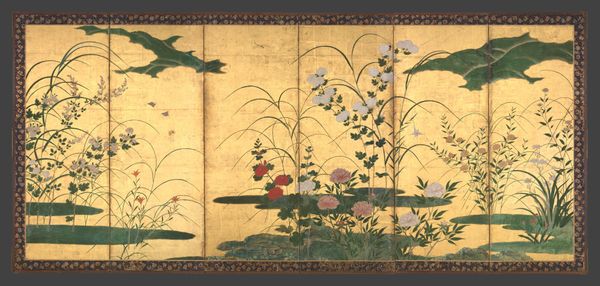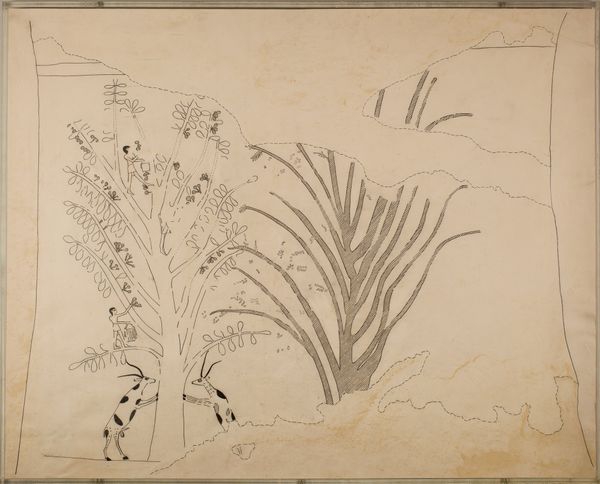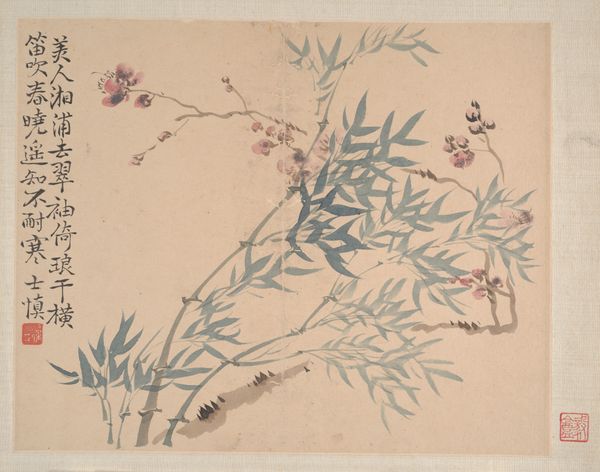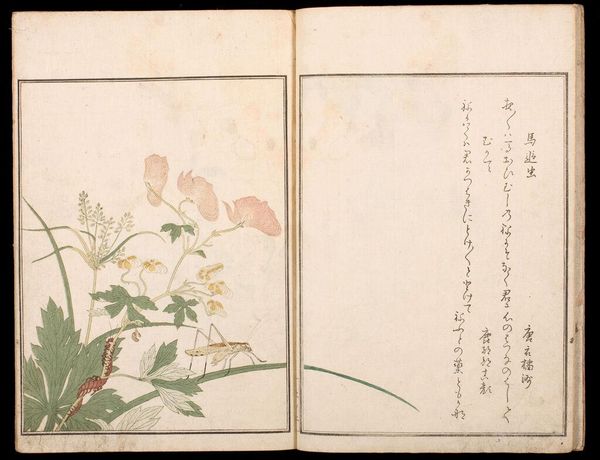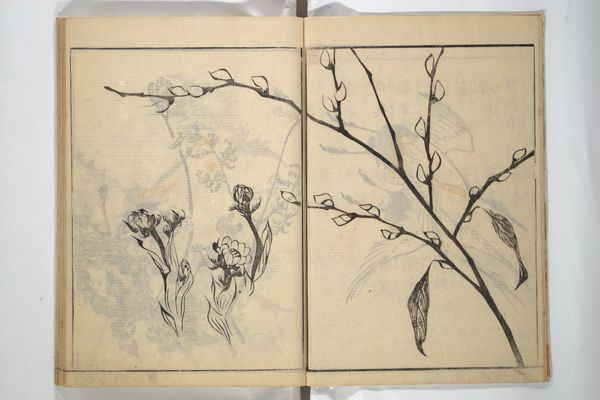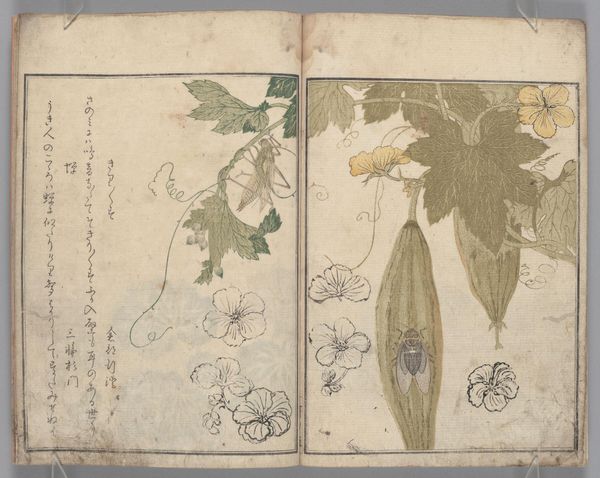
drawing, paper, watercolor
#
drawing
#
water colours
#
book
#
asian-art
#
ukiyo-e
#
paper
#
watercolor
#
coloured pencil
#
plant
Dimensions: 8 1/4 × 5 11/16 in. (21 × 14.5 cm)
Copyright: Public Domain
Curator: This is a page from Mori Shunkei's "Shunkei Picture Album," dating back to 1820. It's currently housed at the Metropolitan Museum of Art. The medium is listed as drawing using watercolour and coloured pencil on paper. What's your initial impression? Editor: Delicate, almost faded, yet incredibly precise. It seems quiet, doesn't it? Like a preserved moment. You can almost feel the handmade paper texture. Curator: The choice of the album format would have certainly played a part in how this artwork would have been encountered. Picture albums circulated among certain artistic and literary circles and could represent collaboration. Editor: Exactly, there’s something intrinsically personal about holding an album. Considering its materials and process, the labor is understated, wouldn't you say? The delicacy belies a keen eye and a steady hand. I'm thinking particularly about the ink quality used to depict these grasshoppers. Curator: Absolutely. The artist was clearly working within the established Ukiyo-e tradition, adapting it to reflect an interest in the natural world. It fits within the broader context of appreciating these album leaves among scholarly circles who also valued similar subject matter like poetry. Editor: These sorts of album pages are never straightforward records of "nature," they're mediated by cultural meaning through modes of material making and consumption. Even the placement of the insects speaks volumes, wouldn’t you say? Not just subjects but placed meticulously among rendered botanical matter. Curator: Indeed. The naturalism of the depiction perhaps obscures how the very concept of "nature" shifts through historical periods of increased urbanization. Here it has become less "wild" and more a controlled visual form circulating among elites. Editor: Ultimately it really reveals a fascination with natural form. We shouldn't underplay the simple joy in close observation – and the inherent value judgment within the labour, time and material production when looking this closely. Curator: And in that light, we also get an intimate view into the aesthetics and priorities of Edo period Japanese society and how the natural world circulated within. Editor: An interesting juxtaposition, then. An object intended for privileged hands showing the universal quality of detail rendered with care.
Comments
No comments
Be the first to comment and join the conversation on the ultimate creative platform.


